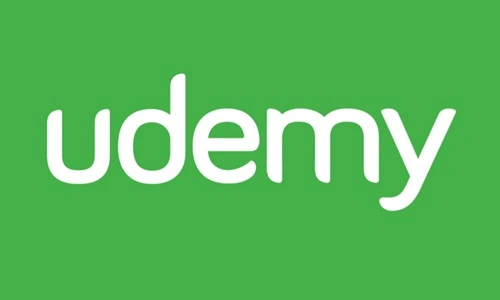Udemy, founded in 2010 by Eren Bali, Gagan Biyani, and Oktay Caglar, is one of the world’s leading online learning platforms. With a mission to democratize education, Udemy connects learners with instructors who provide courses on various topics, ranging from technology and business to personal development and creative arts. The platform offers flexibility for both students and instructors, allowing learners to study at their own pace while instructors can monetize their expertise. This article explores Udemy’s business model and delves into how it generates revenue.
Overview of Udemy’s Business Model

Udemy operates on a two-sided marketplace model, acting as a platform that brings together instructors and learners. The company follows a B2C (Business-to-Consumer) and B2B (Business-to-Business) approach to cater to individual learners and organizations. The core aspects of its business model include:
- Course Marketplace: A platform where instructors can create, upload, and sell courses.
- Flexible Learning: Self-paced courses available for learners across multiple devices.
- Global Reach: Serving millions of learners and instructors in over 190 countries.
- Affordable Pricing: Offering courses at a wide range of price points to ensure accessibility.
Udemy’s success lies in its ability to balance affordability and quality while providing a seamless experience for both learners and instructors.
Revenue Streams
Udemy generates revenue through various streams, targeting both individual learners and enterprise clients:
a) Course Sales (B2C Model)
The primary source of revenue for Udemy is the sale of individual courses on its platform. Instructors set the price of their courses, typically ranging from $10 to $200, depending on the content and complexity.
Revenue Model:
- Revenue Sharing: Udemy takes a percentage of the course sales as a platform fee:
- 50% of the revenue if the course is sold organically through Udemy’s marketplace.
- 97% of the revenue goes to the instructor if they sell the course directly through a self-promotion link (using Udemy’s referral tools).
This model incentivizes instructors to market their courses actively while also ensuring Udemy benefits from organic traffic.
b) Udemy Business (B2B Model)
Udemy offers a subscription-based service for businesses and organizations under the Udemy Business brand. This service provides access to a curated library of courses tailored to corporate training and employee upskilling needs.
Revenue Source:
- Businesses pay an annual subscription fee based on the number of employees enrolled.
- Companies like Adidas, Pinterest, and Volkswagen are among Udemy Business clients, contributing significantly to revenue.
c) Subscription Plans
In addition to individual course sales, Udemy is experimenting with subscription plans for individual users, offering unlimited access to a curated selection of courses for a monthly or annual fee. This model is designed to attract learners who prefer access to multiple courses at a fixed price.
Revenue Source:
- Subscription fees paid by learners for premium access.
d) Corporate Partnerships
Udemy collaborates with organizations, universities, and government bodies to provide online training programs and educational content. These partnerships generate revenue through bulk course purchases and licensing agreements.
e) Promotions and Discounts
Udemy frequently runs promotions and offers discounts on courses, attracting price-sensitive learners. While this may lower per-course revenue, the increased volume of course sales compensates for the lower pricing.
Revenue Source:
- Higher transaction volumes during promotional campaigns.
f) Affiliate Marketing
Udemy runs an affiliate program where third-party marketers promote courses on their websites, blogs, or social media. Affiliates earn a commission for every course sold through their referral links.
Revenue Source:
- Udemy benefits from increased course sales, while affiliates are incentivized to market the platform.
g) International Markets
Udemy earns revenue from its global presence by offering courses in multiple languages and localizing its platform for different regions. International markets, especially emerging economies, contribute significantly to Udemy’s growth.
Cost Structure
Udemy’s operational model incurs several costs to ensure seamless functionality and growth:
a) Platform Development and Maintenance
Udemy invests heavily in technology to enhance its platform, ensuring:
- Scalability for millions of users.
- Features like AI-driven course recommendations and search optimization.
- Mobile app and multi-device compatibility.
b) Content Moderation
Maintaining the quality of courses is critical for Udemy’s reputation. This involves:
- Reviewing uploaded courses to meet quality standards.
- Regularly updating and removing outdated content.
c) Marketing and Advertising
Udemy spends significantly on digital marketing, including:
- Paid search ads and social media campaigns.
- Partnerships with affiliates and influencers.
d) Instructor Support and Tools
Udemy provides tools and resources for instructors, such as:
- Course creation tools and analytics dashboards.
- Training materials to help instructors improve course quality.
e) Customer Support
The company maintains a robust customer support system to assist learners and instructors with technical or platform-related issues.
f) Localization and Global Expansion
Investments in language localization and regional customization are necessary for Udemy’s global operations.
Unique Features Driving Revenue Growth
Udemy employs several strategies to ensure consistent growth and revenue generation:
a) Accessibility and Affordability
With low-cost courses and frequent discounts, Udemy attracts learners from diverse economic backgrounds.
b) Diverse Course Library
Udemy offers over 200,000 courses across categories such as technology, business, personal development, and creative arts, catering to a broad audience.
c) Focus on Skill Development
With courses aligned to industry trends, Udemy attracts professionals looking to upskill in areas like programming, digital marketing, and data analytics.
d) Gamified Learning
Features like progress tracking, certificates of completion, and quizzes keep learners engaged and motivated.
e) Partnerships with Top Instructors
Udemy collaborates with industry experts and experienced professionals to offer high-quality courses, attracting more learners.
Challenges and Opportunities
Challenges
- Intense Competition: Competing with platforms like Coursera, Skillshare, and LinkedIn Learning.
- Quality Control: Ensuring consistent course quality in a marketplace with thousands of instructors.
- Free Alternatives: The availability of free online learning resources (e.g., YouTube, Khan Academy) can deter some users.
Opportunities
- Global Expansion: Tapping into emerging markets with localized content and pricing strategies.
- Corporate Training: Expanding Udemy Business to target more organizations looking for upskilling solutions.
- AI and Personalization: Leveraging AI to provide personalized course recommendations and adaptive learning paths.
Financial Overview
As of the latest reports, Udemy has achieved steady revenue growth, driven by its diverse revenue streams and expanding global presence. With over 50 million learners and 70,000 instructors, Udemy has become a leader in the online education market. The success of its B2B segment, Udemy Business, has further strengthened its financial performance.
Conclusion
Udemy’s business model demonstrates the potential of an accessible and flexible online learning marketplace. By balancing affordability, quality, and global reach, Udemy has established itself as a leader in the edtech space. With ongoing innovations, a growing B2B presence, and an expanding library of courses, Udemy is well-positioned to sustain its growth in the competitive online education industry.

